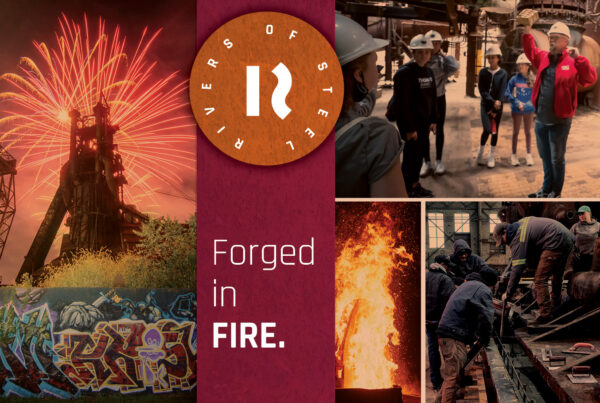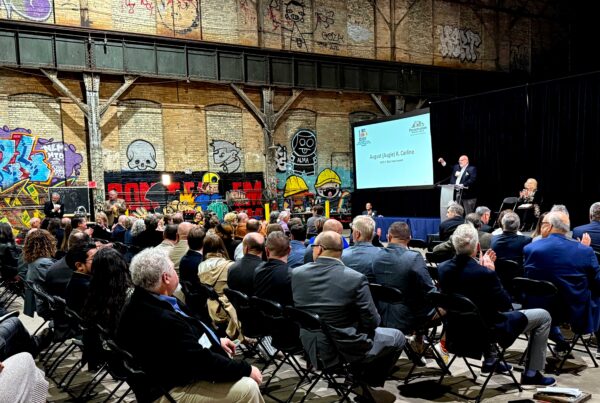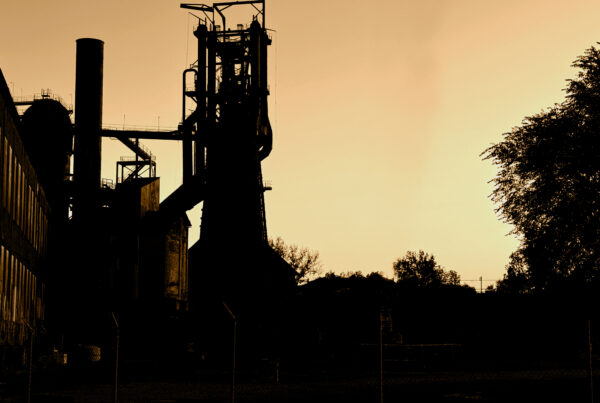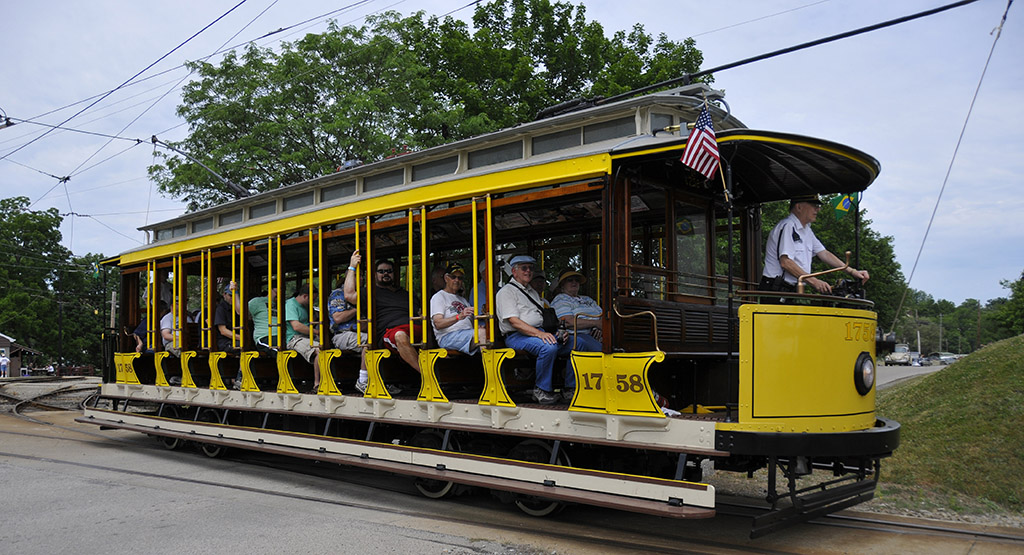
By Gita Michulka, Contributing Writer | Image: Open car at Museum Road, courtesy of the Pennsylvania Trolley Museum.
 Community Spotlight
Community Spotlight
The Community Spotlight series features Rivers of Steel’s partner organizations whose work contributes to the vibrancy of the Rivers of Steel National Heritage Area.
Pennsylvania Trolley Museum Creates ‘Rolling Melting Pot’ Experience
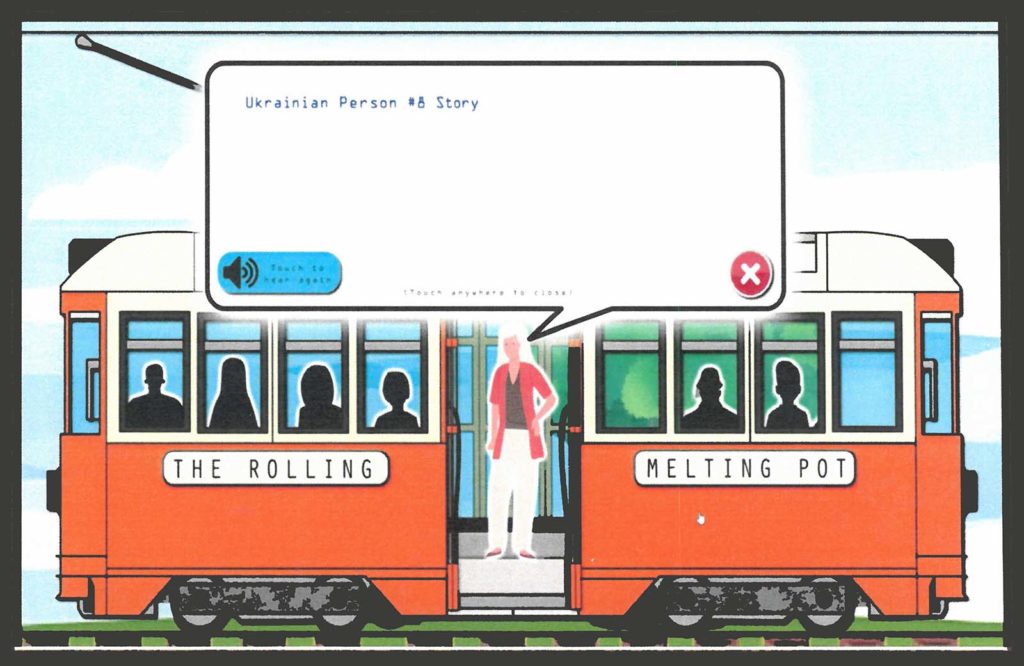
A design concept for “The Rolling Melting Pot” exhibit at the Pennsylvania Trolley Museum.
Riding the Trolley to the Mill
While we might think of taking a ride on the T to the North Shore to catch a Steelers game or being transported to Mr. Rogers’ magical land of make believe when we hear the word “trolley,” there was a point in our region’s history when the idea of riding on a trolley simply meant getting to work.
For decades, Pittsburgh’s trolley system was a critical connection between the disparate populations of immigrants across the city and the steel mills where they worked.
“Without street cars, people couldn’t get to work,” notes Scott Becker, executive director and CEO of the Pennsylvania Trolley Museum. “It would not be surprising to be on a streetcar at rush hour and hear different languages being spoken.”
Preserving this specific point in time is the inspiration behind the development of a new exhibit, The Rolling Melting Pot.
“The reason we came up with the phrase Rolling Melting Pot is because that’s what street cars were. What they did was they allowed accessibility for a broad range of the population,” says Becker. “We’re talking people of all different ethnic backgrounds, financial backgrounds, literally people just off the boat who couldn’t read English…we actually have in our collection street signs in Slovakian and all of these other languages.”
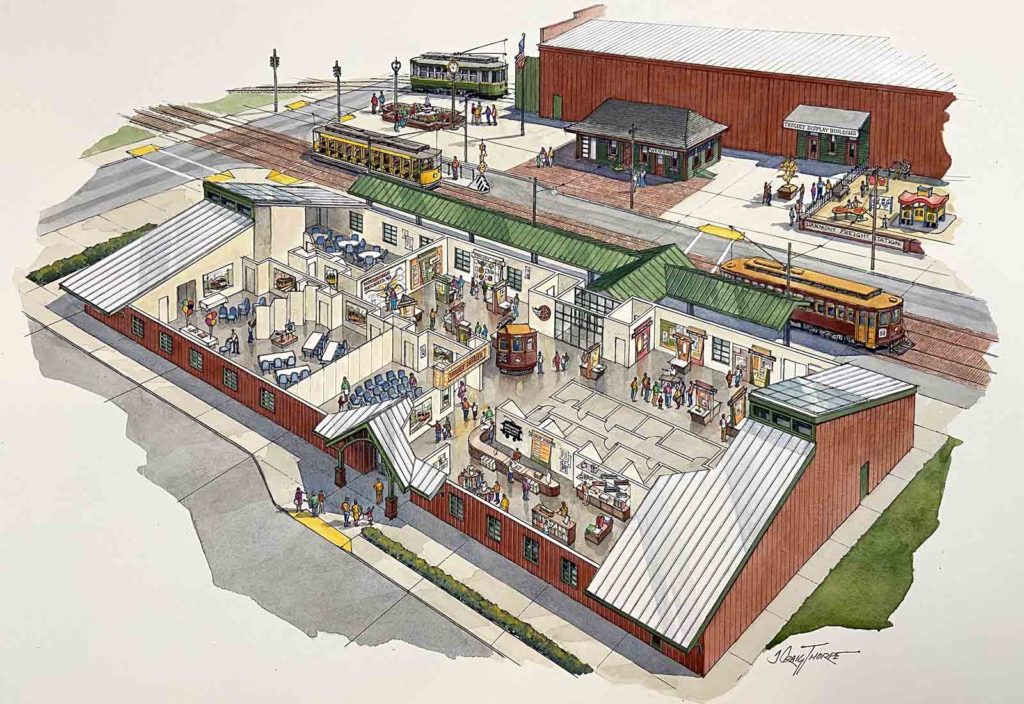
Artist’s renderings by J. Craig Thorpe provided by the Pennsylvania Trolley Museum.
An Expansion Allows for Immersion
The museum is in the process of expanding their campus with the addition of a Welcome and Education Center, allowing them to grow the immersive trolley-era heritage experiences offered to guests. As part of this expansion, Becker and his staff utilized funding provided by a grant from the Pennsylvania Department of Conservation and Natural Resources, Bureau of Recreation and Conservation, Environmental Stewardship Fund, administered by the Rivers of Steel, to partner with the Carnegie Science Center on the design, fabrication, and installation of the Rolling Melting Pot.
This interactive display will enable students and other visitors to activate content that relays the impact that immigration had on trolleys, and that trolleys had on immigration. Greetings and station messages, such as warnings of the approaching cars, will be featured in different languages, and an audio-video feature will allow visitors to pick a rider and hear why they ride (work, shopping, recreation), as well as their ethnic heritage and native language.
Trolleys and Industry
Becker points out that not a lot of people realize the connections between how the trolley cars were run then and the Port Authority system we are used to now. In addition to utilizing signage in multiple languages, “cars were painted by a color system to indicate the lines, and later they adopted a number system to help people figure out which cars they needed to board to get home. The Port Authority adopted the same system and in fact they still use the same numbers that the streetcar companies used!” The 54C, an integral bus line for many city commuters, directly relates to the streetcar lines that held a similar route nearly a century ago.
And this, Becker says, “is right in the heart of the Rivers of Steel story.” The Pennsylvania Trolley Museum is “a great asset in helping to interpret particularly the industrial heritage of the region,” explains Becker. “We have trolley cars that used to run from McKeesport to the Edgar Thompson Steel Mill, and to J&L, and took the workers there.”
Through its Rivers of Steel National Heritage Area program, Rivers of Steel champions the region’s natural, cultural, educational, recreational, and industrial resources as key components for preserving the region’s heritage, focusing on developing a sense of place, as well as contributing to the economic vibrancy of the region’s citizens and communities—including the preservation of the history of our region’s transportation systems.
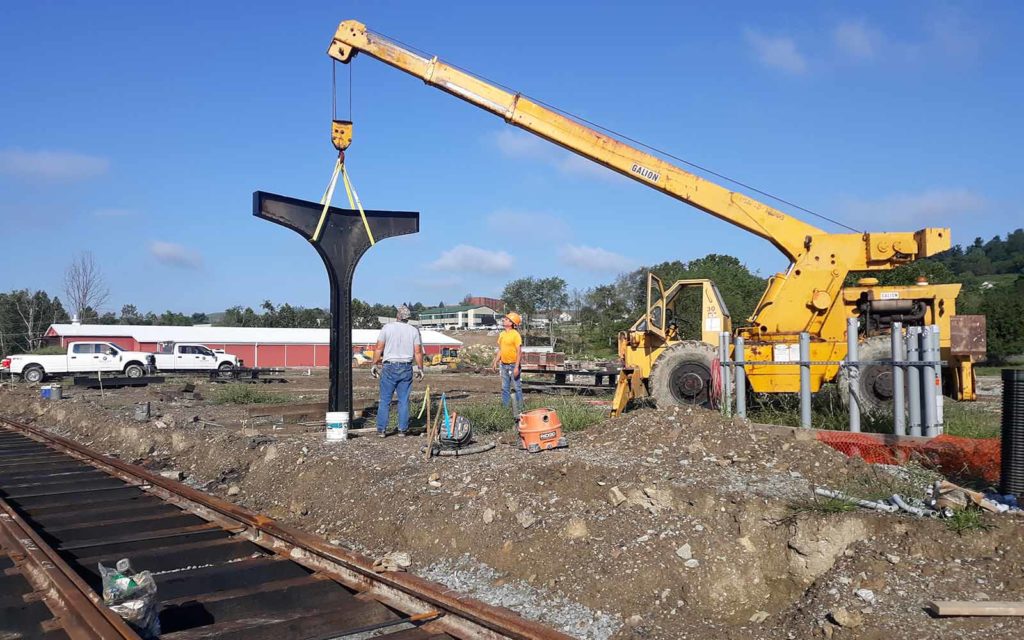
The Trolley Street canopy column was set in September. Photo by Larry Lovejoy.
Slated to open in late 2022, the Welcome Center will display and interpret exhibits that tell the story of the trolley era in a new and more immersive way. Learn more at pa-trolley.org.
Additional funding for the Welcome and Education Center, the neighboring Trolley Street, and other campus improvements has been provided by foundation support from the Allegheny Foundation, Richard K. Mellon Foundation, smaller foundation and individual donations, and the Commonwealth of Pennsylvania.
About the Mini-Grant Program
Rivers of Steel’s Mini-Grant Program assists heritage-related sites and organizations as well as municipalities within the Rivers of Steel National Heritage Area to develop new and innovative programs, partnerships, exhibits, tours, and other initiatives. Funded projects support heritage tourism, enhance preservation efforts, involve the stewardship of natural resources, encourage outdoor recreation, and include collaborative partnerships. Through these efforts, Rivers of Steel seeks to identify, conserve, promote, and interpret the industrial and cultural heritage that defines southwestern Pennsylvania.
The Rivers of Steel National Heritage Area is one of twelve supported by the Pennsylvania Department of Conservation and Natural Resources (DCNR). Funding is provided via DCNR’s Community Conservation Partnerships Program and the Environmental Stewardship Fund to Rivers of Steel, which administers the Mini-Grant Program. The Pennsylvania Trolley Museum is one of six organizations who received Mini-Grant funding through this program in 2021.
Gita Michulka is a Pittsburgh-based marketing and communications consultant with over 15 years of experience promoting our region’s arts, recreation, and nonprofit assets.
If you’d like to know more about community projects supported by the Mini-Grant Program, read Gita’s recent article about the Gallery KST at Kelly Strayhorn Theater.

 Community Spotlight
Community Spotlight